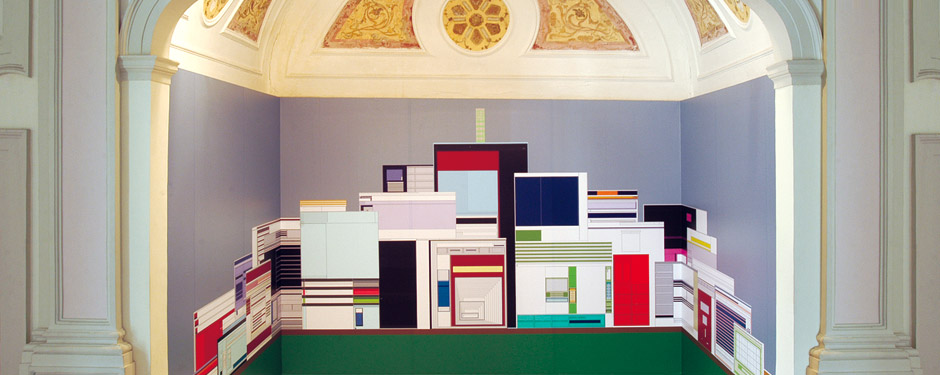To Google
Sarah Cosulich Canarutto

The complex digital structures by Marotta&Russo might look fleeting and brittle, as is they were freeze-frames on the point of resuming movement. Just like the urban landscapes, which, in a metaphorical and physical way, they tend to reflect, they are sophisticated structures implying the possibility of the successive development of those already held in their essence within. Artists consider ‘image’ a poetic equation and, as such, in its rationalism the possibility of countless other changes is not ruled out. In these terms their work is contemporary because it is able to suggest representations reflecting the present not only from a visual standpoint, but also as logical and anthropological thoughts responding to world’s changes. Subtracting the texts from web pages, dividing flows of information beneath them, adding the structures to the background, multiplying them in the final image: Marotta&Russo use maths in order to organise fragments of our age and to invent new icons. It is a type of poetry which, instead of arranging impulsively sounds and words, interlaces systematically sentences, actual states, real and everyday symbols initiating an unexpected visual language set on the synthesis of present.
The power of a work of art is associated with its faculty of referring itself not only to the contemporary but also to a hypothetical future from which one can look backwards. The communication/exchange relationship is especially pointed out in To Google, installed by Marotta & Russo at Villa Manin in 2004. In addition to being an interesting representation of the concept of painting and its current meaning, they initiated an enchanting interlacement of three time levels by introducing the digital landscape into the baroque niche. While architectonic ornaments recalled history, the naked web pages told about the present with the more analytical eyes of the future and suggested the future by the instinctual look of the present. The historical frame was at the same time outline, background, holder, TV and cage of reality.
The homepage diagrams and all the structures transformed by Marotta & Russo as carrier elements of the images represent codified ready-made forms. They lose their semiotic function and assimilate into the more unexpected and less controlled language of art. The work appears in this process of transformation when symbol and form intersect and become indistinguishable, cancelling the borders between subject and object, two-dimensionality and three-dimensionality.
“To Google ” points up in particular the artists’ attention focused on the concept of frame/holder/outline. The physical frame of the niche represents a module that repeats concentrically turning from edge to background and being reflected in turn in the web pages’ outlines. The holder has another characteristic: it refers continually to an enigmatic content that in the artists’ work seems always to be realized in the form of void space.
The circularity of Marotta & Russo’s language has value not only in terms of time and process, but also, as in many works, it becomes also an eloquent paradox. In the ObjectKit works, for example, the metamorphosis risks becoming almost complete, by turning the work of art into the potential means and iconographic matrix of which it is constituted. The shells of objects and gadgets are taken and rearranged as constituents of the new image. If it were used by the artists in a functional way on a base different from the classical one, the cycle would end in the starting point. As if Arman’s tube colours should be used to paint another picture.